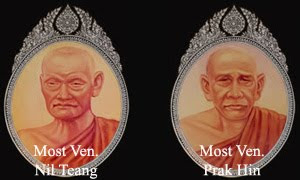The Three Fundamental Characteristics of Individual Existence (Tilakkhana) according to Buddhism can be termed thus:
Anicca (impermanence)
Dukkha (suffering)
Anatta (non-selfness or non-substantiality)
These three Marks of Existence can be called the root of suffering. These Characteristics of Existence are common to all things and can be referred to as ‘Universal Characteristics’.
1) Anicca (impermanence)
Impermanence is common to all material, mental, coarse, subtle, internal and external phenomena. Everything in this world is subject to change. Every living thing is in a continuous state of flux. Human beings wish for permanent existence but all life, family, friends, relationships, personalities, attitudes and interests are subject to continuous change. So human’s life is impermanent as everything associated with it are changing every moment. The Buddha taught that we should realize that the idea of ‘permanent self’ is a myth and should not crave for permanent existence; instead we should try to attain ‘Nibbāna’, which can be called permanent.
2. Dukkha (suffering)
Suffering can be due to various causes. According to Buddhism, there are twelve elements that cause suffering. They are birth (Jāti), old age (Jarā), death (Marana), sorrow (Soka), lamentation (Parideva), bodily pain (Kāyika dukkha), grief (Domanassa), despair (Upāyāsa), associations with the unloving (Appiyasampayoga), separation from the loved (Piyavippayoga), not getting what one wants (Icchitālābha), and ‘five aggregates of clinging’ (Pacupādānakkhandha). All states of ‘Dukkha’ come under the following three categories.
1) Dukkha-dukkha: ‘Dukkha’ in its ordinary manifestation as physical and mental sufferings.
2) Viparināma-dukkha: ‘Dukkha’ produced by interchange or momentariness of the feelings.
3) Sankhāra-dukkha: ‘Dukkha’ as a result of conditional states integrated with individual components.
3. Anattā (non-selfness or non-substantiality)
This is the central doctrine of Buddhism and is the only specific doctrine of Buddhism where the entire structure of the Buddhist teachings stands. The Buddha taught the inter-connectedness of life.
According to Him, each self has no fixed reality, but is constantly changing depending on changing conditions. There is no fixed definable self. In ‘Samyutta Nikāya’, the Buddha explains the concept of non-self thus;
"This body, monks, is not yours, nor does it belong to others. It should be known, it should be considered, monks, as former deeds purposefully performed and thought out. In regard to it, monks, a well-instructed noble disciple practices well-centered attention (Yoniso Manasikāra) only on dependent origination".
Since the Buddha taught ‘Anattā’ doctrine, He is called ‘Anattā-vādin’ or teacher of impersonality. Nothing is self-existing. The Buddha saw the self as dependent on everything that had gone before and is constantly changing in response to the changing reality.






0 comments:
Post a Comment